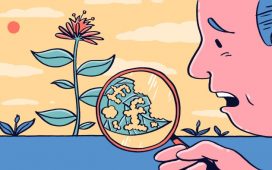Let’s start by understanding product design. Product design encompasses the entire process of creating physical products or tangible solutions. It involves everything from conceptualisation and ideation to prototyping and manufacturing. Product designers are responsible for transforming ideas into tangible objects that fulfill user needs and solve real-world problems. Their role involves considering factors such as aesthetics, functionality, ergonomics, materials, and manufacturing processes. They strive to create products that are visually appealing, functional, and intuitive to use.
On the other hand, UX design focuses specifically on the user experience within digital interfaces and interactive products. UX designers are concerned with creating meaningful, seamless, and intuitive experiences for users. They delve into understanding user behaviors, motivations, and pain points to design interfaces that are easy to navigate, visually appealing, and aligned with user expectations. UX designers collaborate closely with other stakeholders, such as product managers and developers, to ensure that the end product provides a delightful and user-friendly experience.
While product design and UX design share a common goal of creating user-centric solutions, they have distinct emphases and priorities. Product design leans towards physical form, manufacturing processes, and overall product functionality. UX design, on the other hand, focuses on optimising the digital user journey, interaction flows, and information architecture.
The deliverables also differ between these disciplines. Product designers often produce physical prototypes, technical drawings, and specifications that guide the manufacturing process. UX designers, in contrast, deliver wireframes, interactive prototypes, and user flow diagrams that help in designing and developing digital interfaces.
The skill sets and expertise required for product design and UX design also vary. Product designers must have a deep understanding of materials, manufacturing processes, and engineering principles. They often possess skills in industrial design, 3D modeling, and CAD software. In contrast, UX designers need proficiency in user research, information architecture, interaction design, and usability testing. They employ tools like wireframing software, prototyping tools, and user testing platforms to create and validate their designs.Collaboration and teamwork play vital roles in both disciplines. Product designers collaborate closely with engineers, manufacturers, and stakeholders to ensure that the final product meets technical requirements and aligns with the overall vision. UX designers collaborate with product managers, developers, and visual designers to ensure that the user experience is seamlessly integrated into the overall product development process.To illustrate the differences, let’s consider an example. Suppose a team is designing a new mobile phone. The product designer would focus on the phone’s physical form, materials, and manufacturing processes, ensuring that it feels comfortable to hold and visually appealing. The UX designer, on the other hand, would concentrate on the phone’s interface, designing intuitive navigation, logical information architecture, and an engaging user experience that makes interacting with the phone enjoyable and effortless.
Despite these differences, there are significant synergies between product design and UX design. Both disciplines share the common goal of creating cohesive and delightful user experiences. They can collaborate effectively by leveraging their respective strengths. Product designers can contribute to UX design by considering usability and ergonomics during the physical design process. UX designers can provide valuable input to product design by understanding user needs and preferences, which can inform decisions regarding form and functionality.
Design thinking serves as a bridge between product and UX design. By adopting a human-centered approach, both disciplines can align their efforts and work collaboratively throughout the entire design process. Design thinking encourages empathy, iteration, and prototyping, enabling the team to create products that address real user needs and deliver exceptional experiences.
Successful integration of product and UX design can be observed in various case studies, with companies like Apple, Tesla, and Airbnb standing out as prime examples.
Apple, renowned for its iconic products, exemplifies a seamless blend of product design and UX design. Take the iPhone as an example. Apple’s product design team meticulously crafts the physical form, selecting premium materials and paying attention to minute details. Simultaneously, the UX design team focuses on creating an intuitive interface, designing user-friendly interactions, and optimizing the overall user experience. The result is a cohesive product where the hardware and software work in harmony, delivering a delightful user experience that has captivated millions of users worldwide.
Tesla, the electric vehicle pioneer, also excels in integrating product and UX design. Tesla’s product design team develops sleek and futuristic vehicles that are not only visually striking but also functional and energy-efficient. Simultaneously, their UX design team focuses on creating a seamless digital experience through the vehicle’s touchscreen interface, intuitive controls, and real-time feedback. The integration of physical design and digital interfaces contributes to Tesla’s reputation for providing an innovative and user-friendly driving experience.
To harmonise product and UX design, effective communication and collaboration strategies are vital. Establishing clear channels of communication, fostering a culture of collaboration, and encouraging cross-disciplinary feedback can lead to better outcomes. Overcoming challenges, such as conflicting priorities or differing design philosophies, requires a shared understanding of the importance of collaboration and finding common ground to achieve the best possible user experience.
Various tools and techniques can facilitate the integration of product and UX design. Collaborative prototyping tools, design systems, and shared documentation platforms can help teams work together efficiently. Regular cross-disciplinary workshops and design sprints can also foster collaboration and generate innovative ideas.
In conclusion, product design and UX design are two distinct yet interrelated disciplines that contribute to creating exceptional user experiences. Understanding their differences and leveraging their synergies is crucial for designing products that are not only visually appealing but also functionally intuitive and enjoyable to use. By embracing collaboration, adopting design thinking, and recognising the strengths of each discipline, we can shape a future where product and UX design seamlessly merge, resulting in innovative, user-centric solutions that exceed expectations.
The author is co-founder of ZEUX Innovation








